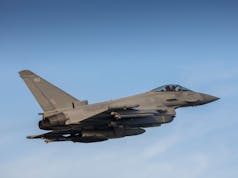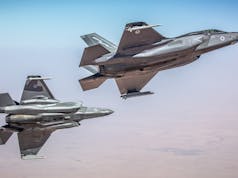At DSEI 2025, Thales and the British firm Autonomous Devices announced a new partnership to develop a drone-based electronic warfare system for naval and land forces.
The collaboration will produce the EW-UAS1, a turnkey platform combining Thales’ electronic warfare payloads with a next-generation drone designed by Autonomous Devices.
The payload is being developed to deliver both electronic support, detecting and geolocating threats, and electronic attack, including jamming. Autonomous Devices is responsible for the drone’s design, which focuses on high manoeuvrability and long endurance. Initial testing of the system is already underway and will continue through the year.
Thales said the collaboration draws on its experience in electronic warfare command-and-control integration and the certification needed for drones to operate in both civil and military airspace.
Marie Gayrel, Thales’ Vice-President for Intelligence, Surveillance and Reconnaissance, said: “The drone-based electronic warfare solution developed by Thales and Autonomous Devices is a technological game-changer for the armed forces, providing a reliable passive capability to counter modern threats while ensuring long-range protection around their strategic assets.”
Ken Wahren, CEO of Autonomous Devices, added: “The integration of these technologies in a turnkey solution promises to unlock EW capabilities well beyond the state of the art, providing an effective counter to rapidly-evolving threats, and this agreement represents a significant step en route to delivering these capabilities to the warfighter.”
The EW-UAS1 is designed to enhance ship survivability and provide protection for land forces by detecting incoming missiles, deploying electronic countermeasures, and disrupting adversary radar and targeting systems. Its endurance and agility, they claim, allow it to extend detection coverage, reposition quickly, and apply deception tactics that can mislead radar operators and deflect hostile missiles.
By combining reusability with modular payloads, the system is intended to give armed forces a flexible and cost-effective option for both defensive and offensive electronic warfare missions.














Another research project. Goodie. Far betteer than ordering something!
Lots of teenagers playing with Ai… How much does it cost us all this tosh??
God knows…